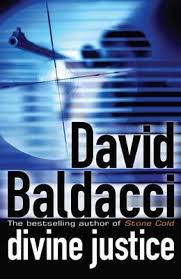| French letter(s) | English Sound |
| a, à, â | ah |
| é, et, and final er and ez | ay |
| e, è, ê, ai, ei, ais | eh |
| i, y | ee |
| o | oh |
| o | shorter and more open than aw in bought |
| ou | oo |
| oy, oi | wah |
| u | ew |
| u + vowel | wee |
| c (before e, i, y) | s |
| ç (before a, o, u) | s |
| c (before a, o, u) | k |
| g (before e, i, y) | zh |
| ge (before a, o) | zh |
| g (before a, o, u) | g |
| gn | nyuh |
| h | silent |
| j | zh |
| qu, final q | k |
| r | rolled |
| s (between vowels) | z |
| th | t |
| x | ekss, except as s in six, dix, and soixante in liaisons, like z |
Monday, December 28, 2009
French Pronunciation
French Alphabets
Tuesday, November 17, 2009
SILVER
| ||
|
Sunday, October 25, 2009
Divine Justice

Sunday, July 26, 2009
Understanding Consumer India Better
Tuesday, July 14, 2009
SECTION 377- A New Leaf Turned By India
Tuesday, July 7, 2009
Sandcastles By The Sea
Sunday, May 31, 2009
My Favourite Novels
Saturday, May 30, 2009
Porter's Five Force Model- a different view
Weakness of Industry Sector Analysis
According to Porter the 5 forces model is intended for an industry level analysis and it is not intended to be used for an analysis of an industry sector. For example, pharmaceuticals may be considered one industry and bio-technology another but they both belong to the Life Sciences industry sector. The suggestion is to decompose the industry sector into component industries and then apply the five forces model. Whilst this approach will offer competitive insights it may miss the emergent properties of the sector i.e. the whole may be greater than the sum of the parts.
Weakness of Conglomerate or Multi-Industry Company Analysis
In addition to industry sector analysis those companies that compete in multiple industries as a conglomerate or multi-industry company such as Berkshire Hathaway, Mitsubishi or GE also present a similar challenge. For these diversified companies the proposed solution is the same again – do the competitive analysis by industry.
Competitive Forces
There is a broad assumption of perfect competition within an industry and this is not always true as some companies have been identified in price fixing scandals for example "British Airways has denied ripping off passengers after being fined a total of £271m over price-fixing scandal involving Virgin Atlantic..." as Sky News reported 28Aug07 inBA Fined 271m Over Price-Fixing Scandal. Of course some price fixing cartels are normal practice suchOPEC[Organisation of the Petroleum Exporting Countries] and whilst some oil exporting countries such as Saudi Arabia are within the cartel others like Russia are outside of it. Companies may also enter into alliances as either a self-protection mechanism or as an aggressive move to eliminate competition. These “other” competitive forces introduce a further dimension to competitive analysis.
Profitable Industries
The competitive analysis is intended to identify the competitive intensity and therefore the attractiveness [profitability] of an industry. However, there may be significant uncertainty that renders such expectations meaningless. That uncertainty might be driven by temporary macro economic conditions for example the price of oil going down, then massively up followed by a sharp fall again. Or significant shifts in government policy such as ethanol fuel or solar power. Finally, there is the possibility that the public embrace a new technology or way of doing things that completely changes the competitive landscape for example Amazon and internet book sales or Apple’s introduction of the iPod and its impact on the music industry.
I Love The Love & Anguish Spilled All Over This Poem
I
II
III
IV
V
VI
PART TWO
I
II
III
IV
V
VI
VII
VIII
IX
* * * * * *
X
XI

